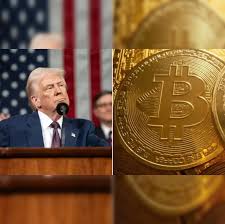
World Liberty Financial’s decision to allow its $WLFI tokens to become tradable marks a turning point not only for the Trump family’s digital venture but for the broader cryptocurrency landscape. In straightforward terms, token holders have voted overwhelmingly to let investors buy and sell $WLFI on secondary markets, transforming what was once a static digital asset into a liquid instrument. This move promises to reshape trading behaviors, spur new regulatory attention, and test the resilience of decentralized finance models.
A New Era of Liquidity and Price Discovery
By making $WLFI tokens tradable, World Liberty shifts its asset from a locked‑in voting right into an actively exchanged commodity. Until now, early backers could vote on changes to the platform’s software but had no straightforward way to realize gains or losses. Unlocking tradability introduces real‑time pricing, so every token’s value will now reflect supply and demand on exchanges—centralized or decentralized alike.
For the crypto industry, this change underlines how token design can evolve. Many projects initially restrict trading to guard against speculative bubbles, only opening markets once infrastructure and compliance measures are in place. World Liberty’s approach mirrors trends seen in decentralized finance (DeFi), where tokens often begin with governance functions before graduating to full tradability. The result can be pronounced price swings: newcomers may rush in chasing quick gains, while long‑term supporters hold out for structural improvements.
With exchanges preparing to list $WLFI, trading volumes could surge. High liquidity typically attracts market‑making firms and algorithmic traders, who help tighten bid‑ask spreads and stabilize prices. Yet greater liquidity also brings heightened volatility: large buy or sell orders may move the market sharply, and social‑media–fueled hype can amplify price movements. In this context, $WLFI’s emergence as a tradeable token will serve as a case study in how celebrity‑backed digital assets perform once open to mass speculation.
Investor Sentiment and Ethical Questions
The vote to activate trading rights—which passed with nearly unanimous support—reflects investor optimism that $WLFI’s value will climb now that tokens can be sold freely. For many holders, the token’s appeal lies less in governance and more in its association with a well‑known public figure, driving hopes of outsized returns. Early buyers reportedly snapped up billions of tokens at fractions of a cent; listing on exchanges could drive prices into the single‑digit dollar range if momentum builds.
However, this popularity carries ethical and regulatory implications. Tokens linked to influential individuals raise conflict‑of‑interest concerns when those figures wield public power. Critics warn that allowing a high‑profile political family to profit from crypto speculation blurs lines between private gain and public service. Regulators in several countries are already tightening rules around token disclosures, anti‑money‑laundering measures, and insider trading. As $WLFI begins trading, oversight bodies may scrutinize whether token‑based voting privileges or undisclosed holdings constitute unfair advantages.
Moreover, the shift to tradability underscores persistent debates over token classification. In some jurisdictions, tokens with profit‑sharing or price‑appreciation incentives are deemed securities and fall under stringent securities laws. World Liberty has maintained that $WLFI is not a security, a stance likely to be tested as trading volumes grow and token prices fluctuate. Exchanges listing $WLFI may require legal assurances or limit trading to jurisdictions with clear regulatory guardrails, affecting the token’s global reach.
Broader Implications for the Crypto Ecosystem
World Liberty’s move highlights key dynamics in the rapidly evolving DeFi sector. As projects iterate on token models—balancing governance, utility, and tradability—they shape market expectations for new launches. Observers note that a sequence of governance token, utility token, and then tradeable asset can smooth rollout risks, giving platforms time to address technical bugs and compliance gaps before exposing tokens to speculative frenzy.
In practical terms, $WLFI’s tradability will test the capacity of both centralized exchanges and decentralized protocols to handle a politically charged asset. On the one hand, listings on major platforms could introduce $WLFI to a broad investor base, integrating it with wallets, lending services, and DeFi pools. On the other, decentralized exchanges (DEXs) may welcome $WLFI without the scrutiny of listing committees, offering near‑instant trading but with greater counterparty risk.
The episode also underscores the growing intersection of politics and crypto. As more public figures explore token offerings, the industry faces pressure to adopt robust governance frameworks, transparent token‑holders’ rights, and clear roadmaps for tradability. Absent such measures, value could become untethered from underlying utility, inviting regulatory clampdowns and eroding public confidence.
Finally, for the wider crypto market, $WLFI’s journey from a governance token to a fully tradable asset may set precedents. Projects watching this rollout will gauge how token‑holder votes translate into price action, how exchanges manage politically connected assets, and how regulators respond to high‑profile token launches. If $WLFI sustains healthy trading activity without major compliance breaches, it could encourage similar phased releases across the industry. Conversely, any market turmoil, legal challenges, or exchange delistings could prompt developers to rethink token designs, favoring simpler utility tokens or delaying tradability until more rigorous standards are met.
In simple terms, World Liberty’s decision means that the $WLFI token is no longer just a voting chip in a private club but a tradable piece of digital property—one whose changing value will be closely watched by investors, exchanges, and regulators alike. Its path forward will reveal much about how future token offerings can balance community governance, speculative markets, and the legal frameworks that underpin them.
(Source:www.coingape.com)
A New Era of Liquidity and Price Discovery
By making $WLFI tokens tradable, World Liberty shifts its asset from a locked‑in voting right into an actively exchanged commodity. Until now, early backers could vote on changes to the platform’s software but had no straightforward way to realize gains or losses. Unlocking tradability introduces real‑time pricing, so every token’s value will now reflect supply and demand on exchanges—centralized or decentralized alike.
For the crypto industry, this change underlines how token design can evolve. Many projects initially restrict trading to guard against speculative bubbles, only opening markets once infrastructure and compliance measures are in place. World Liberty’s approach mirrors trends seen in decentralized finance (DeFi), where tokens often begin with governance functions before graduating to full tradability. The result can be pronounced price swings: newcomers may rush in chasing quick gains, while long‑term supporters hold out for structural improvements.
With exchanges preparing to list $WLFI, trading volumes could surge. High liquidity typically attracts market‑making firms and algorithmic traders, who help tighten bid‑ask spreads and stabilize prices. Yet greater liquidity also brings heightened volatility: large buy or sell orders may move the market sharply, and social‑media–fueled hype can amplify price movements. In this context, $WLFI’s emergence as a tradeable token will serve as a case study in how celebrity‑backed digital assets perform once open to mass speculation.
Investor Sentiment and Ethical Questions
The vote to activate trading rights—which passed with nearly unanimous support—reflects investor optimism that $WLFI’s value will climb now that tokens can be sold freely. For many holders, the token’s appeal lies less in governance and more in its association with a well‑known public figure, driving hopes of outsized returns. Early buyers reportedly snapped up billions of tokens at fractions of a cent; listing on exchanges could drive prices into the single‑digit dollar range if momentum builds.
However, this popularity carries ethical and regulatory implications. Tokens linked to influential individuals raise conflict‑of‑interest concerns when those figures wield public power. Critics warn that allowing a high‑profile political family to profit from crypto speculation blurs lines between private gain and public service. Regulators in several countries are already tightening rules around token disclosures, anti‑money‑laundering measures, and insider trading. As $WLFI begins trading, oversight bodies may scrutinize whether token‑based voting privileges or undisclosed holdings constitute unfair advantages.
Moreover, the shift to tradability underscores persistent debates over token classification. In some jurisdictions, tokens with profit‑sharing or price‑appreciation incentives are deemed securities and fall under stringent securities laws. World Liberty has maintained that $WLFI is not a security, a stance likely to be tested as trading volumes grow and token prices fluctuate. Exchanges listing $WLFI may require legal assurances or limit trading to jurisdictions with clear regulatory guardrails, affecting the token’s global reach.
Broader Implications for the Crypto Ecosystem
World Liberty’s move highlights key dynamics in the rapidly evolving DeFi sector. As projects iterate on token models—balancing governance, utility, and tradability—they shape market expectations for new launches. Observers note that a sequence of governance token, utility token, and then tradeable asset can smooth rollout risks, giving platforms time to address technical bugs and compliance gaps before exposing tokens to speculative frenzy.
In practical terms, $WLFI’s tradability will test the capacity of both centralized exchanges and decentralized protocols to handle a politically charged asset. On the one hand, listings on major platforms could introduce $WLFI to a broad investor base, integrating it with wallets, lending services, and DeFi pools. On the other, decentralized exchanges (DEXs) may welcome $WLFI without the scrutiny of listing committees, offering near‑instant trading but with greater counterparty risk.
The episode also underscores the growing intersection of politics and crypto. As more public figures explore token offerings, the industry faces pressure to adopt robust governance frameworks, transparent token‑holders’ rights, and clear roadmaps for tradability. Absent such measures, value could become untethered from underlying utility, inviting regulatory clampdowns and eroding public confidence.
Finally, for the wider crypto market, $WLFI’s journey from a governance token to a fully tradable asset may set precedents. Projects watching this rollout will gauge how token‑holder votes translate into price action, how exchanges manage politically connected assets, and how regulators respond to high‑profile token launches. If $WLFI sustains healthy trading activity without major compliance breaches, it could encourage similar phased releases across the industry. Conversely, any market turmoil, legal challenges, or exchange delistings could prompt developers to rethink token designs, favoring simpler utility tokens or delaying tradability until more rigorous standards are met.
In simple terms, World Liberty’s decision means that the $WLFI token is no longer just a voting chip in a private club but a tradable piece of digital property—one whose changing value will be closely watched by investors, exchanges, and regulators alike. Its path forward will reveal much about how future token offerings can balance community governance, speculative markets, and the legal frameworks that underpin them.
(Source:www.coingape.com)














